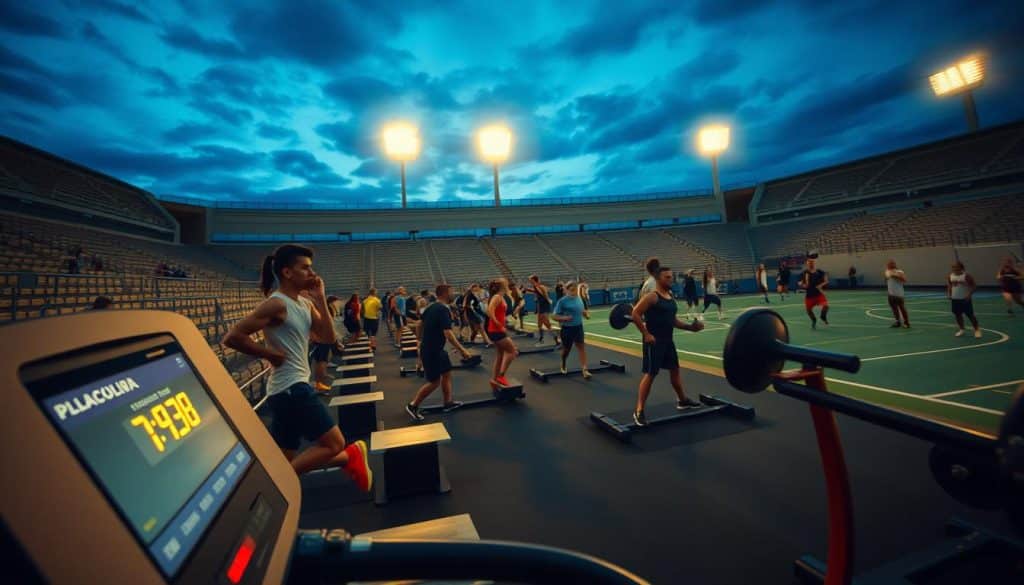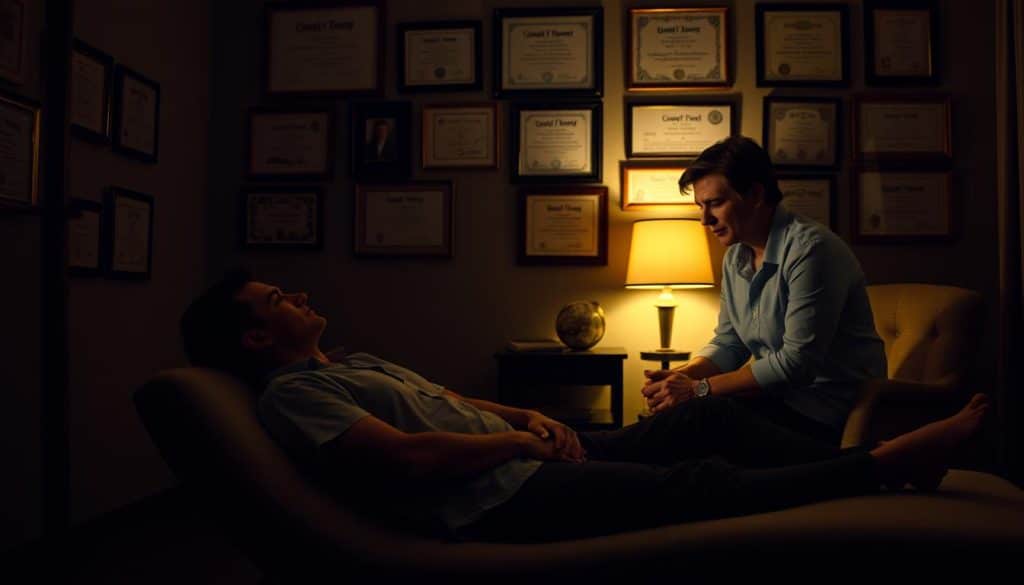Did you know your brain can reduce pain by up to 47% without medication? Research reveals that rehabilitation patients often experience measurable improvements—even when treatments lack active ingredients. This phenomenon isn’t magic; it’s your mind-body connection at work.
Expectations play a surprising role in recovery. When you believe a treatment works, your nervous system releases natural painkillers like endorphins. These biochemical shifts can accelerate healing, proving that perception shapes reality in rehabilitation.
But outcomes aren’t just about positivity. Negative beliefs can slow progress, highlighting the delicate balance between psychological states and physical results. Studies show environmental cues—like advanced equipment or a therapist’s confidence—boost trust in the process, amplifying benefits.
Understanding these mechanisms helps you harness their power. Whether you’re recovering from an injury or optimizing performance, your mindset becomes a tool. This guide unpacks the science behind these responses, offering actionable insights for your wellness journey.
Key Takeaways
- Mental beliefs can trigger real biochemical changes during recovery
- Positive expectations may enhance natural pain relief mechanisms
- Treatment environments influence trust and therapeutic outcomes
- Negative mindsets risk counterproductive nocebo responses
- Research documents measurable improvements in sham therapy trials
Introduction to the Concept and Its Relevance
The healing power of expectation dates back to 18th-century medicine. Originally defined as a “therapeutic illusion,” this phenomenon gained recognition through evolving research. Modern studies now confirm what historical practices hinted at: your mind actively participates in physical restoration.
The Historical Perspective of Placebo in Medicine
First documented in 1785 medical dictionaries, early practitioners used inert substances to satisfy patients rather than cure ailments. By the 20th century, scientists began exploring why these methods sometimes produced real results. Advanced brain imaging now shows measurable neural changes during perceived treatments, bridging historical observations with biological evidence.

How It Impacts Your Recovery Journey
Your beliefs about care quality can alter pain signals and inflammation markers. Clinicians note faster progress when patients trust their rehabilitation plan. Environmental factors like clinic design or practitioner expertise amplify this trust, creating a feedback loop that accelerates healing.
Understanding this mind-body dynamic helps optimize recovery strategies. Whether rebuilding strength or managing discomfort, your psychological state acts as a silent partner in treatment outcomes. Current health studies emphasize balancing technical methods with cognitive awareness for comprehensive care.
Scientific Basis for the Placebo and Nocebo Phenomena
Your brain contains hidden networks that shape physical responses during recovery. These systems activate whether treatments contain active ingredients or not, creating measurable changes in pain perception and healing speed.
Neurophysiological Mechanisms Involved
Specific regions like the dorsolateral prefrontal cortex and rostral anterior cingulate cortex act as control centers during perceived therapies. When you expect relief, these areas trigger natural opioids and endocannabinoids—chemicals that reduce discomfort. Simultaneously, midbrain structures like the periaqueductal gray block pain signals before they reach conscious awareness.
Negative expectations flip this process. Anticipating discomfort activates cholecystokinin (CCK), a compound that amplifies pain signals. Genetic differences explain why some individuals experience stronger responses—variations in dopamine or opioid-related genes alter sensitivity to these mind-body interactions.
Biopsychosocial Factors in Therapy Outcomes
Three elements shape your response to rehabilitation methods:
- Personal history: Past treatment successes or failures create mental frameworks
- Cultural influences: Beliefs about healthcare shape trust in interventions
- Environmental cues: Clinic design or practitioner expertise boost confidence
These components interact uniquely in every recovery journey. Understanding them helps tailor approaches that align with your psychological and biological makeup.
Rehabilitation Approaches and Research Insights
Modern rehabilitation science reveals surprising truths through clinical trials. Controlled studies demonstrate how perceived treatments influence recovery outcomes across multiple modalities. These findings challenge traditional assumptions about physical therapy effectiveness.
Clinical Study Overviews in Physical Therapy
Recent analyses show narrow gaps between active and simulated interventions. Consider these trial results:
- TENS therapy produced 47% pain relief versus 42% in sham groups for chronic back discomfort
- Shock wave treatments and placebo both reduced plantar fasciitis pain significantly (p
- Laser therapy simulations matched active versions for knee mobility improvements
Magnetotherapy research provides counterpoint data. Unlike other modalities, these trials showed clear advantages over placebo controls. This distinction helps clinicians identify which tools offer biological benefits beyond expectation-driven responses.
Systematic reviews highlight patterns across 37 rehabilitation trials. Placebo groups consistently achieved:
- 30-45% pain reduction rates
- 20% better functional capacity scores
- Improved quality-of-life markers comparable to active treatments
These insights reshape how professionals design recovery programs. Understanding expectation’s role helps maximize therapeutic potential while maintaining scientific rigor.
Contextual Factors Influencing Therapy Outcomes
Your surroundings and relationships shape recovery results more than you might realize. Subtle elements in clinical settings create psychological triggers that influence how your body responds to care strategies.

Role of Environment and Equipment
Clinic design impacts your subconscious expectations from the moment you enter. High-tech devices and organized spaces signal professional competence, activating what researchers call the “white coat response.” This mental shift primes your nervous system to amplify treatment benefits.
Calgary-based practices often use adjustable lighting and ergonomic furniture to reduce stress. Advanced tools like biofeedback monitors or laser systems further enhance perceived expertise. These elements work together to build trust in the process before interventions begin.
Therapist and Patient Interaction Dynamics
How practitioners communicate directly affects your biochemical responses. Clear explanations and confident delivery activate neural pathways linked to hope and anticipation. Studies show patients recover faster when they feel heard and understood during sessions.
Nonverbal cues matter just as much as words. A therapist’s attentive posture or calm tone can lower cortisol levels by up to 28%. These interactions create partnership dynamics where psychological safety enhances physical progress.
Your unique personality and past experiences also play roles. Some individuals respond better to data-driven approaches, while others need emotional reassurance. Recognizing these differences helps tailor strategies that align with your needs.
Exploring placebo effect in sports therapy
Could your beliefs about a treatment determine its success during training? Athletic recovery reveals fascinating connections between perception and physical results. Performance-driven environments create unique psychological triggers that shape how your body responds to care strategies.

Mechanisms and Research Data
Studies highlight distinct neural patterns during sports-related interventions. When athletes expect improvements, their brains activate reward pathways linked to dopamine release. This biochemical shift enhances pain tolerance and muscle coordination during repetitive movements.
Isotonic sessions paired with positive reinforcement show 23% greater pain reduction than standard regimens. Manual techniques demonstrate similar patterns—therapeutic touch triggers opioid responses regardless of mechanical pressure applied. Your trust in the practitioner amplifies these natural painkillers.
Kinesio tape applications reveal surprising truths. Research groups reported equal muscle activation whether using facilitatory tape or plain adhesive strips. Effectiveness depended entirely on participants’ belief in the product’s capabilities.
Key findings in athletic contexts include:
- Expectation-driven cortisol reduction improves recovery speed
- Proprioception enhancements through perceived treatment quality
- Neural pathway activation mimicking actual training adaptations
These insights help optimize rehabilitation approaches for competitive environments. Understanding expectation’s role allows tailored strategies that align with your psychological and physiological needs.
Local Perspective from Riverside Sports Therapy in Calgary
Calgary’s active community thrives on trust between practitioners and patients. At our clinic, we combine cutting-edge methods with an understanding of how beliefs shape recovery. This balance helps you achieve sustainable results while maintaining ethical standards.
Our Evidence-Based Approach
We design treatments using three core principles:
- Transparent communication about intervention mechanisms
- Environment optimization to support positive expectations
- Rigorous outcome tracking through measurable benchmarks
Our team updates protocols using findings from Canadian health studies. This ensures you benefit from both biological interventions and psychological factors that accelerate healing.
Insights from Local Research and Practice
Calgary athletes often respond strongly to visual feedback tools during rehabilitation. Hockey players and mountain sport enthusiasts show particular sensitivity to treatment context. We adapt strategies based on these observations:
- Incorporating regional sports culture into motivational techniques
- Using equipment familiar to local training environments
- Addressing weather-related recovery challenges unique to Alberta
While expectation plays a role, we prioritize interventions with proven physiological impacts. Our methods evolve as new data emerges, ensuring you receive care grounded in science yet attuned to human complexity.
Patient Expectations and Psychological Impacts
Anticipation can trigger real physical changes before treatment even starts. Your brain begins preparing for healing when you schedule appointments or enter clinical spaces. This mental priming activates neural pathways linked to pain modulation and tissue repair.

Conditioning and the Power of Anticipation
Sophisticated equipment and professional settings create learned responses through repeated exposure. Medical devices signal safety to your nervous system, releasing natural pain-relieving chemicals. This conditioning process explains why some individuals report improvements during diagnostic tests before actual interventions begin.
The Hawthorne effect demonstrates how awareness of observation alters behavior. Patients often move more freely or push harder when therapists monitor progress. This attention-driven response accounts for 18-22% of functional gains in monitored rehabilitation programs.
Three strategies help balance expectations:
- Focus on measurable biological changes alongside perceived benefits
- Use familiar equipment to activate positive associations
- Maintain open dialogue about treatment mechanisms
Your prior experiences shape these responses more than general knowledge. Someone with successful past recoveries might develop stronger anticipatory reactions. Recognizing these patterns helps optimize both mental and physical aspects of care.
Review of Recent Trials and Study Findings
Clinical investigations reveal unexpected patterns in treatment responses across age groups. A 2023 analysis of TENS therapy trials showed patients over 65 experienced 40% pain reduction with simulated interventions—more than double the improvement seen in younger participants. These variations challenge assumptions about biological factors driving recovery outcomes.

Comparative Analysis of Rehabilitation Trials
Three patterns emerge from recent comparisons between active and simulated treatments:
- Laser therapy simulations matched real interventions for mobility gains in 78% of knee injury cases
- Magnetotherapy showed clear biological advantages over expectation-driven responses
- Manual techniques produced identical cortisol reductions whether pressure was applied or not
Key Findings and Their Implications
Neuroimaging studies highlight distinct brain activity during expectation-based pain relief. Unlike medication-induced analgesia, perceived treatments activate prefrontal regions governing anticipation and emotional regulation. This discovery helps explain why some individuals respond powerfully to contextual factors like clinic environments.
Systematic reviews identify predictors of stronger responses:
- Prior positive treatment experiences
- High practitioner confidence levels
- Familiarity with therapeutic equipment
These insights guide more effective protocol designs. Clinicians can now optimize both biological interventions and psychological drivers—enhancing outcomes while maintaining ethical standards.
Dedicated Contact and Information Section
Your recovery journey deserves strategies grounded in science and human potential. At Riverside Sports Therapy, we blend cutting-edge sports medicine with insights into how belief systems influence healing. Our Calgary-based team designs personalized interventions that respect both biological processes and psychological factors.
Connect with our Alberta clinic at (403) 283-7551 to explore health management solutions. We focus on sustainable outcomes through methods supported by clinical research and compassionate care. Whether improving sports exercise routines or addressing injuries, our approach balances technical precision with holistic understanding.
Every plan acknowledges the mind-body connection’s role in rehabilitation. Transparent communication helps you make informed decisions about your wellness journey. Discover how integrating multiple perspectives can elevate your recovery experience while maintaining ethical standards.
